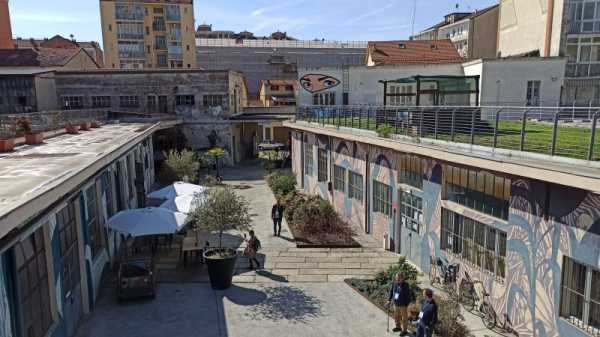
This article is part of our special report A look at democratic experiments across Europe.
European cities and their residents are increasingly using collaborative tools which allow inhabitants to participate in the design and management of city assets, a practice which, according to experts, can create more democratic societies and markets.
The idea behind this model is to establish civic collaborations with local communities, governments, businesses, academics and NGOs, in an effort to bring inhabitants into the decision-making process and the management of city assets or urban commons.
“We call it administrative collaborative democracy,” explained Christian Iaione, law professor at LUISS University and co-director of LabGov.
“It is not about just participating in the local governments, but it’s about sharing the management of and co-owning the services and assets with the city inhabitants,” he added.
An example is the BeeOzanam in Turin, a wide civic space in the north of the city. The compound, once a factory, has been turned into a multi-purpose building, comprising also a temporary house for migrants, a restaurant run by disadvantaged workers and a rooftop community garden.
“This is the result of community initiatives aiming to regenerate the place,” said Emanuela Saporito, co-founder and community planner at Orti Alti, association of architects working on urban regeneration and one of the initiators of BeeOzanam.
“We had our own vision and we discussed this idea of creating a place that was open to participation of local inhabitants, that was providing cultural activities, but also co-designing cultural activities with the neighbourhood,” she explained during a visit organised by the European Commission during the Cities Forum in Turin.
The regeneration process was first supported by private funds and then financed through the “Co-City” project, under the EU Urban Innovative Action programme. The aim of the project was to promote the collaboration between the local administration and citizens for the shared management and regeneration of urban commons.
Similar initiatives have also been taking place in other European cities. For instance, Gdansk, Amsterdam, Iasi and other cities are part of the Civic eState network promoting the co-design of urban commons.
Impact
According to LabGov’s Iaione, this practice puts pressure on the government to improve and innovate its services and “is a way to improve the quality of democracy and achieve social justice while tackling the daunting challenges of the technological and ecological transitions”.
At the same time, “it creates a pressure also on the markets, because it diversifies them, by creating more equitable, inclusive, just business and financial models,” he said, adding that the idea is to generate self-sustainability and avoid constant dependence of society and markets on public policies and policy-makers.
“We need to make sure that there are more cooperative, sustainable, innovative commons-based economic ventures so that – thanks to city inhabitants, young innovators, sustainability-minded entrepreneurial individuals and societal actors or social groups – you not only have more democratic institutions, but you also have more democratic markets.”
A challenging process
However, self-sustainability is challenging especially for urban commons which are not driven by a for-profit logic.
For instance, Cascina Roccafranca, a cultural and social centre opened in 2007 in Turin and co-managed by the municipality and local associations, reported it only manages to achieve 66% of self-sustainability, through space rental and commercial activities in its spaces.
Another issue is the need for investment in capacity building programmes, according to Iaione.
“The inhabitants that work for the commons have not received the same kind of knowledge and technical resources that the public and the private sector have been receiving,” he said.
At the same time, this model of participation can be crucial in dealing with current and future crises, such as droughts or the migration crisis, according to the professor.
“In the end, when a crisis hits, it’s the community that comes together and takes the first response and initiative, but then all the parties involved need to coalesce.”
“As the pandemic demonstrated, humankind is able to get out of crises only by cooperating.”
[Edited by Nathalie Weatherald]
Source: euractiv.com



